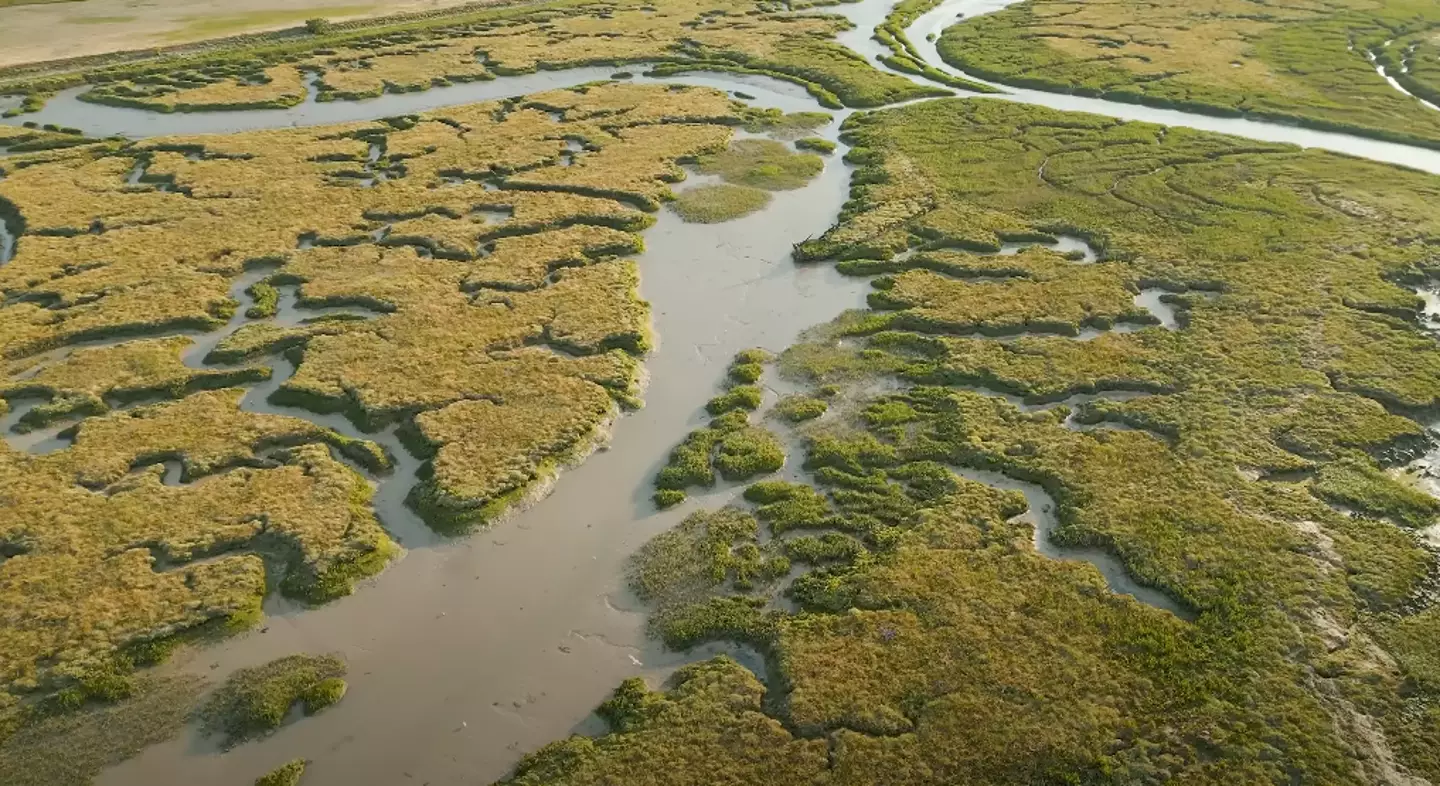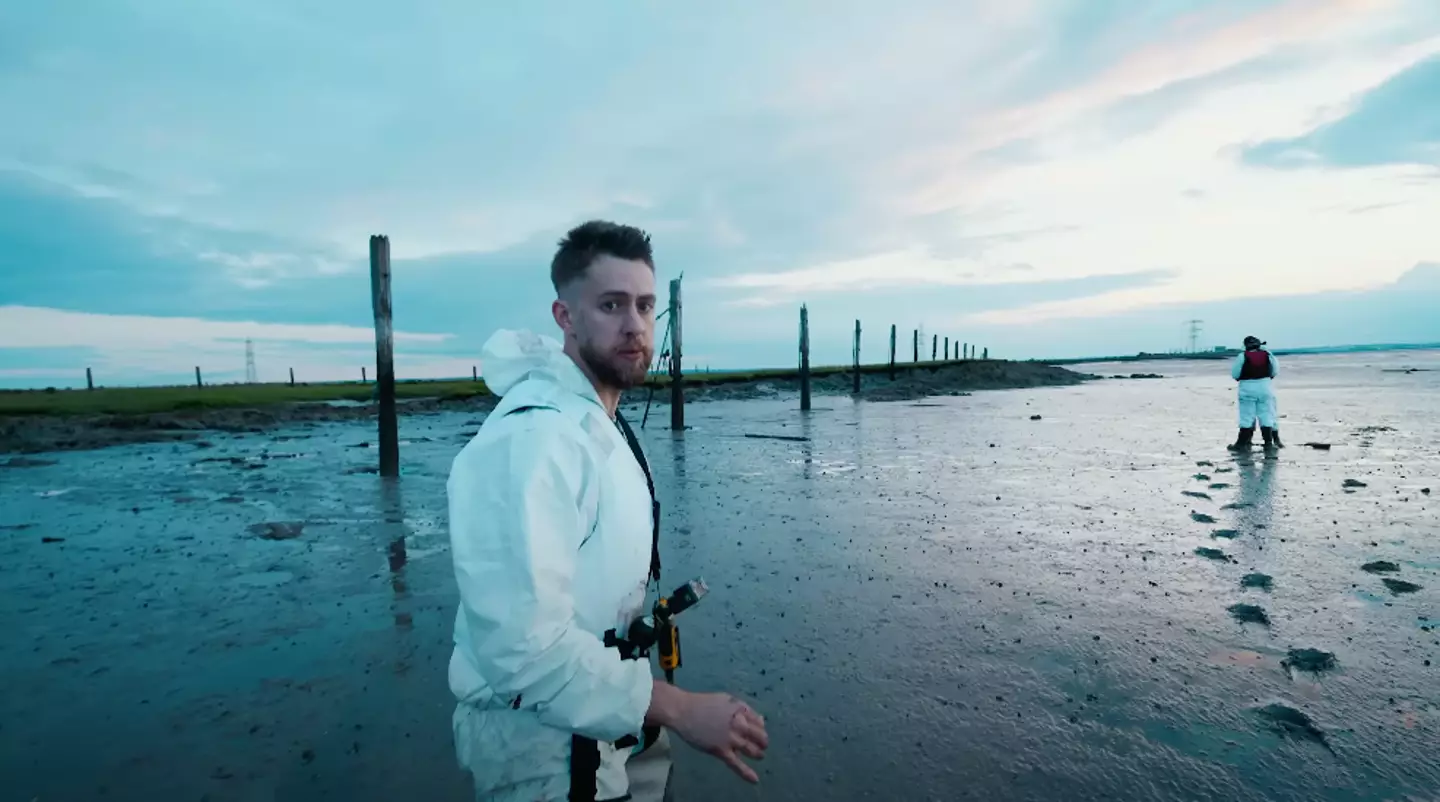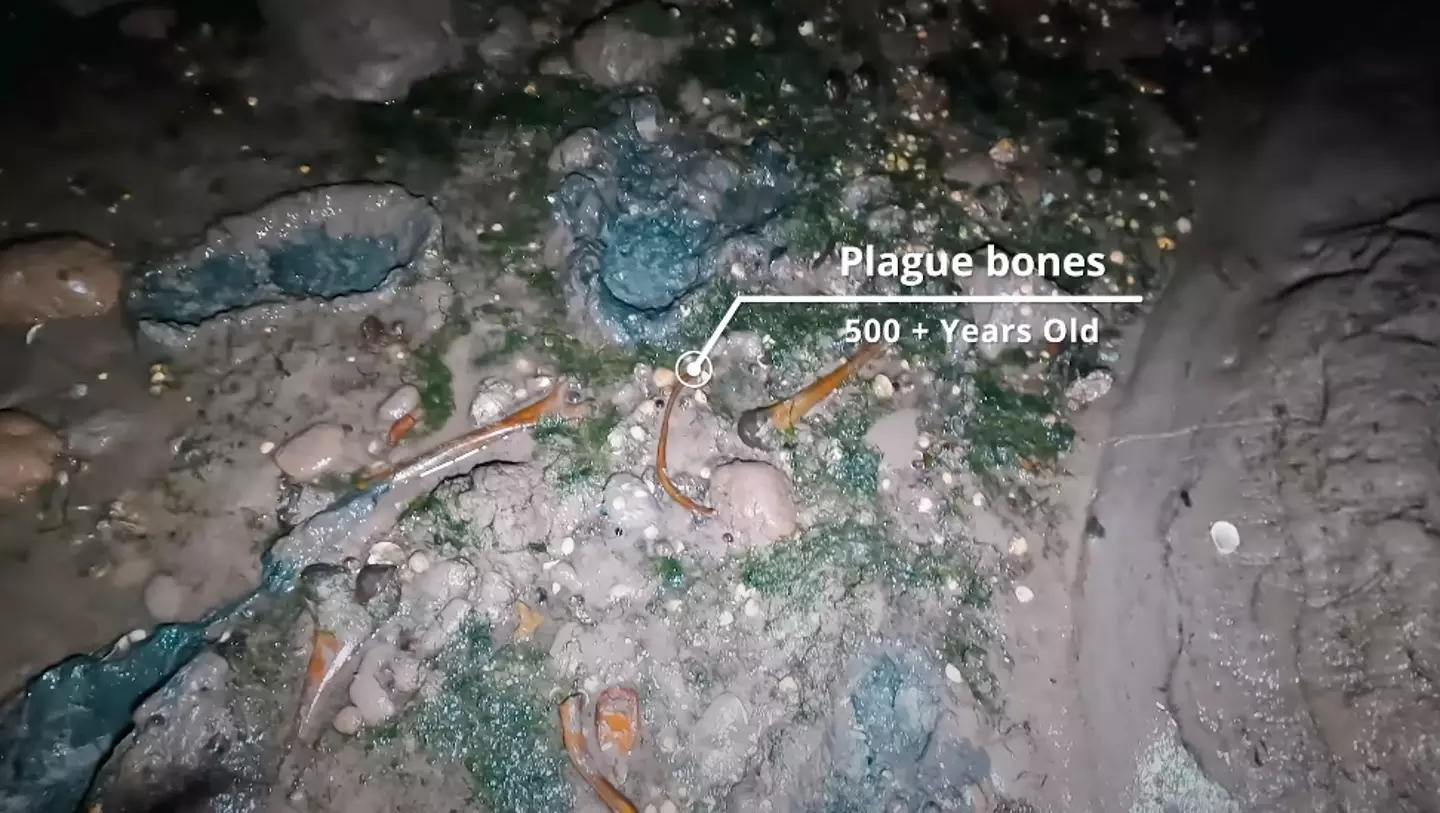Dead Man’s Island has a truly haunting past
Not even Brits are aware that their country is home to what’s being called the ‘world’s most infected island’.
There happens to be an area located near the town of Queenborough, Kent, that’s got a truly haunting past.
Dead Man’s Island gained the horrific moniker after the remains of more than 200 humans were found there in 2016.

Dead Man’s Island is located in the Swale Estuary near the town of Queenborough, Kent (YouTube/Dara Tah)
These remains are said to be those of convicts who died on prison hulks, which were decommissioned ships used to house prisoners back in the 18th and 19th centuries.
The conditions on these hulks were seriously rough, from overcrowding, to disease and poor sanitation, leading to many deaths.
And after the convicts died, their bodies were buried in unmarked graves on the likes of Dead Man’s Island.

YouTuber Dara Tah shared his experience on the island (YouTube/Dara Tah)
However, as the years have gone by, erosion and tidal movements have exposed these graves, revealing bones and other remains scattered across the island’s muddy surface.
While Dead Man’s Island is uninhabited, it happens to be owned by Natural England, a non-public body in the UK, sponsored by the Department for Environment, Food and Rural Affairs.
Over a month ago, YouTuber Dara Tah uploaded a video on his channel (@DaraTah), giving us a glimpse of the eerie grounds covered in bones and quicksand.

A truly frightening sight (YouTube/Dara Tah)
“I spent the night on the island full of human skeletons,” he explained.
“I have visited Dead Man’s Island once before. It is a small marsh island in the south of England that was used as a mass dumping ground for possibly thousands of skeletons infected with the Black Plague but this time we’re spending the night.
“I found out about an area on the island called Coffin Bay which is almost always submerged underwater but during this time of year there is a small window to find it and search it.
“Since it’s so incredibly tough to access this area it’s thought to be packed with historical artefacts that have washed up and been exposed with the coffins.
“Our window was at midnight, meaning we would be stranded on the island for the night as the tide went out and surrounded the island in a deep quicksand.”
In the clip, he shows viewers 500 plus year-old coffins and bones, along with old bottles and belongings.
Despite the harrowing surroundings, the island also happens to be a Site of Special Scientific Interest (SSSI) as a nesting and breeding site for birds.
Featured Image Credit: YouTube/Dara Tah



